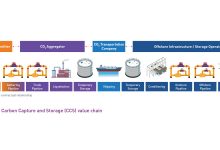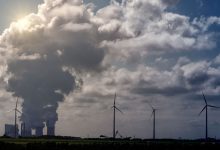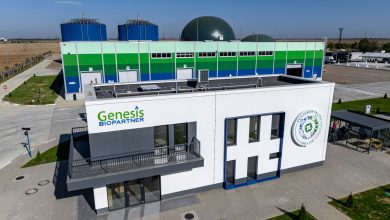Romania limits its GHG emissions in the absence of large industrial platforms
Greenhouse gas emissions from human activity contribute significantly to global warming, and the latest report of the European Environment Agency shows that at the level of 2017, the European Union (EU) recorded an increase in such emissions compared to 2016. In Romania, greenhouse gas (GHG) emissions increased by 2.4 kilotons CO2 equivalent, which meant an increase by 2.1% compared to 2016. Compared with the data recorded in the other EU countries, plus Iceland, Romania is among the cleanest countries if we relate the quantity of emissions to the number of inhabitants.
According to the mentioned report, Romania in 2017 ranked the 10th in terms of GHG emissions, with 114,897 kilotons of CO2 equivalent. Thus, we are far behind states such as Germany, France, Italy, the UK or Poland. The explanation for this performance is one that puts us in a bad light: large industrial platforms have disappeared, and the bulk of emissions now comes from the power system.
Top 5 most polluted EU countries
The statistics of the European Environment Agency do not take into account the population of each country. In relation to this, the ranking changes and the most affected country by greenhouse gas emissions would be Luxembourg. With a population of only 562,000 inhabitants, in this country there are 18.13 tons of CO2 equivalent per person. In the Top 5 most polluted EU countries, plus Iceland, Estonia is also included, with 15.76 tons of CO2, Ireland – with 13.16 tons of CO2, the Czech Republic with 12.42 tons of CO2, and Germany with 11.42 tons of CO2.
Among the most unpolluted countries there are Slovenia with 3.42 tons of CO2 per capita, Malta with 5 tons of CO2, Sweden with 5.3 tons of CO2 and Romania, at par with Croatia, with 5.78 tons of CO2. Thus, the report of the Agency shows that Romania has a very good situation in terms of greenhouse gas emissions with 5.78 tons of CO2 equivalent per capita.
But if we relate to the strongly industrialized European countries, we notice that even without the industry each Romanian receives a share close to the inhabitants of these countries. If we take Germany as example, country with the strongest economy in the EU, last year it recorded emissions of 904,745 kilotons of CO2, but related to a population of 81.2 million persons there were 11.42 tons of CO2 for each inhabitant. If we talk about France, Italy, the UK or Spain, here pollution per capita was about 7 tons of CO2, and in Austria – 9.54 tons of CO2/capita.
Agriculture more polluting than industry
In Romania, most of greenhouse gas emissions came from the power system – 77,877.65 kilotons of CO2 equivalent. The major industry has almost been pulverized, which can also be seen from the fact that emissions from this sector (12,850.84 kilotons of CO2 equivalent) were lower than those from agriculture (18,320.2 kilotons of CO2 equivalent).
In terms of waste, Romania continues to have problems, the proof being that emissions from this segment have totalled a large amount – 5,848.21 kilotons of CO2 equivalent. Waste should be burned in a controlled manner and gas used as fuel. But in our case, this does not really happen.
Total GHG emissions in 2017 (kt CO2 equivalent)
Germany 904,745
UK 470,432
France 466,167
Italy 426,436
Poland 407,432
Spain 338,860
Sweden 192,475
Czech Rep. 130,968
Belgium 116,210
Romania 114,897
Most polluted sectors EU 28 plus Iceland in 2017
- Emissions from the energy sector accounted for about 78% of total emissions. Emissions from combustion of fossil fuels registered an increase of 20.5 billion tons of CO2
- Agriculture contributed with 10% of GHG emissions in the EU, but in this sector, emissions increased by only 1.7 billion tons of CO2
- The contribution of the industrial sector was around 9%, emissions generated by this sector increasing by about 4.7 billion tons of CO2
- The waste sector contributes with about 3% of European emissions, but they decreased by 2.5 billion tons of CO2 equivalent compared with 2016.







